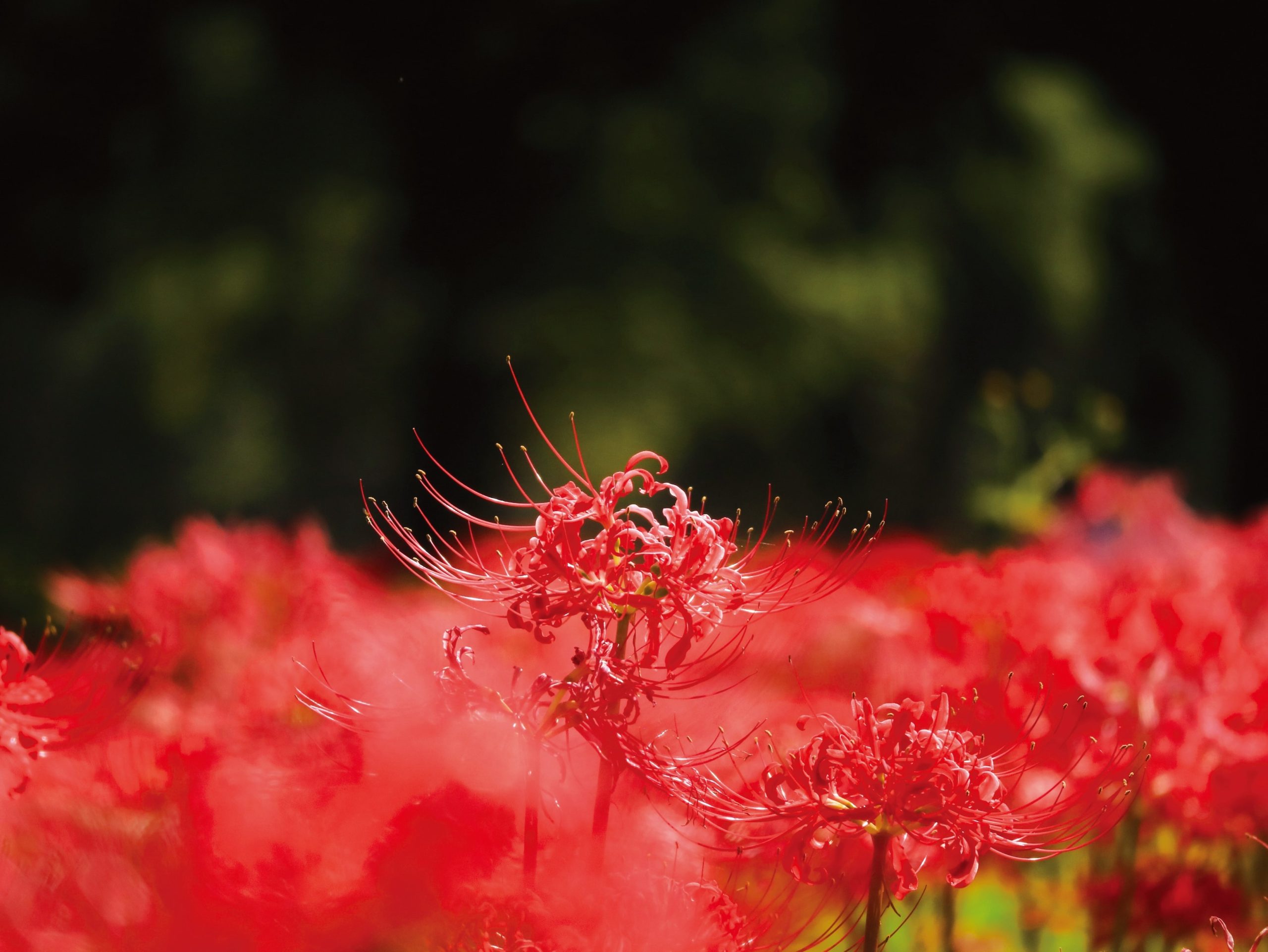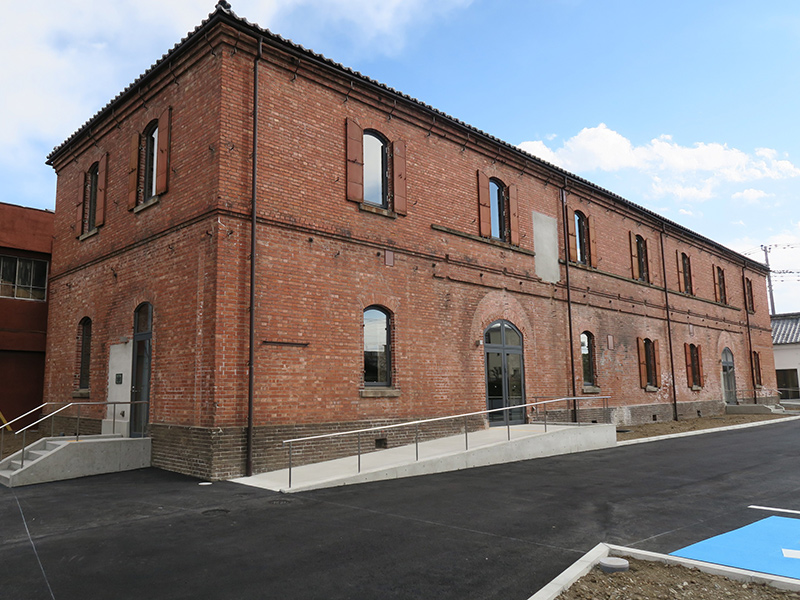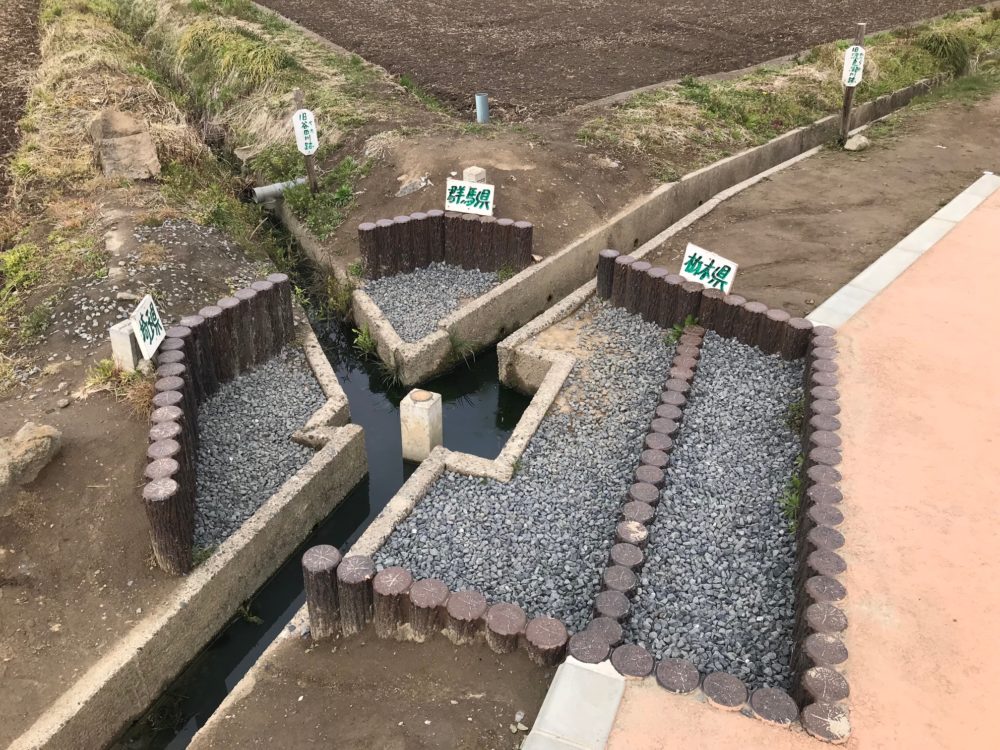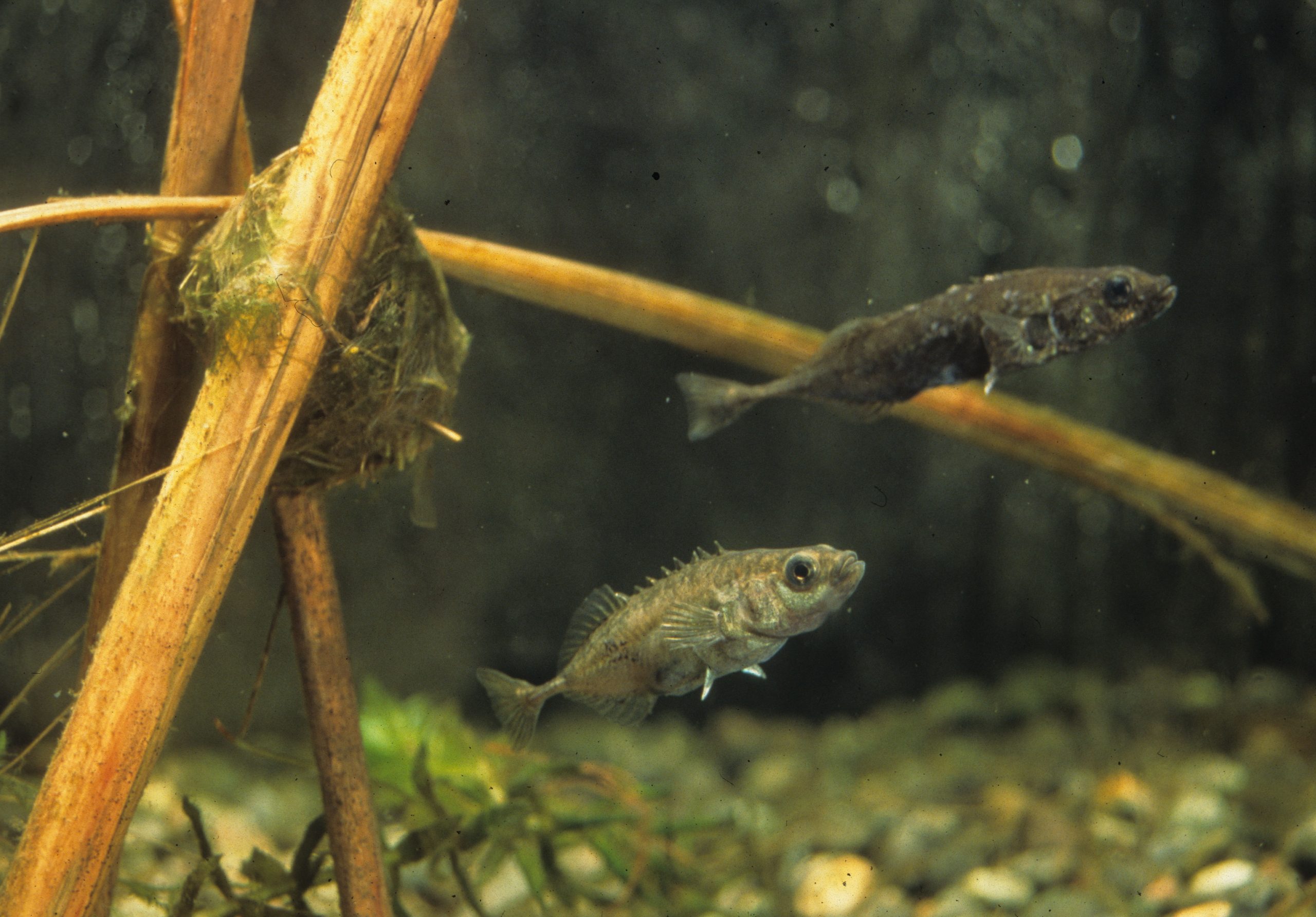Sightseeing Spots
Search Results314

This field of spider lilies was planted on the banks of the Karasu River by local volunteers. The carpet of red flowers blooms along the Karasu River in autumn, with Mt. Haruna and the clear blue sky providing the backdrop for a spectacular view.

This riverside course has a mix of flat and undulating greens and is blessed with a rich natural scenery, with a view of the three mountains of Jōmō and Mt. Asama, and a carpet of red spider lilies in bloom during peak season. The specialty of the course is No. 17, a 595-yd (regular), par 6, extra-long course.

This is the site of the battle of Kanagawa, the largest field battle to have ever taken place in the Kanto region. The fierce battle took place from June 18th to 19th, 1582 on the border between Musashi (Tokyo and Kanagawa) and Ueno (Gunma) along the Kannagawa River. The battle was between Takikawa Kazumasu, lord of Ueno Umabashi Castle, and forces led by Hojo Ujikuni, lord of Musashi Hachigata Castle, and Hojo Ujinao, lord of Odawara Castle. The battle was also known as the “Battle of Kanakubohara" due to being fought in and around Kanakubo and Bisado areas of Kamisato-town.

Located right by the Kamisato Smart IC for great accessibility. You can shop for seasonal fruits and vegetables, western and Japanese sweets, and even experience harvesting the fruits and vegetables yourself! Look forward to further developments from Kamisato Town as a center of tourism!

Located right next to the Kamisato Smart IC, this store is packed with fresh produce representative of Kamisato, such as pears, strawberries, corn, cucumbers, and tomatoes. The store is also popular for holding events featuring seasonal fruits and vegetables, such as the Corn Fair, Pear Fair, and Strawberry Fair. In the food court attached to the store there are a local handmade udon noodle restaurant called Kiyanchi and a handmade hamburger steak restaurant with its head office in Sengoku (Tokyo) called Grill K Farms which attract many lunchtime visitors from near and far.

Here you can see the only castanet-playing haniwa (clay figurine) and dancing female haniwa (clay figurine) ever found in Japan! In addition to the many earthenware and stone tools on display, you'll get an introduction to the life of Kiku Nishizaki, the first Japanese female seaplane pilot and great historical figure of Kamisato, who was the model for the heroine of an NHK TV series.

Built in 1896, this brick warehouse supported Honjō's silk industry with the storage of cocoons and silk. It is a nationally registered tangible cultural property.

This is a tourist information center located in Honjō Station of JR Takasaki Line. Visitors can obtain tourist pamphlets and information regarding the city and purchase Honjō City’s souvenirs. Sweets and Japanese goods recommended by the Honjō City Tourism Association and Honjō Kasuri silk are also available.

The Shibusawa Memorial Museum in Fukaya City showcases the achievements of Shibusawa Eiichi, a businessman from the late 19th to early 20th century who contributed to the development of Japan's modern economy. The museum's archive room features an extensive collection of materials that preserve his great legacy, including his handwritten works and photographs. The main attraction is a lecture delivered by the Shibusawa Eiichi android in the lecture room. By attending this lecture given by a remarkably lifelike android, visitors can learn about Shibusawa Eiichi's philosophy and ideas. *Lectures require advance reservations due to limited capacity. Those wishing to visit should check the schedule on the official website and make reservations well in advance.

Menuma Shodenzan Kangiin Temple is known as one of Japan’s three holy temples and is said to bring blessings for matrimony, family health, fortune, and scholarly achievements. In 2012, the main sanctuary, “Kangiin Shotendo,” was designated as a national treasure due to its highly skilled carvings, modern decorative architecture and public funding of its construction. Events take place throughout the year, such as the annual grand festival and Setsubun festivals during the spring and autumn.

This museum was jointly established by Honjo City and Waseda University. The museum holds archaeological materials from the Paleolithic period through which visitors can trace the history of Honjo City. In addition to artifacts rarely found in Japan, such as the laughing human haniwa (terra-cotta tomb figurine) holding a shield and a completed cast of a small glass ball, visitors can see a variety of valuable materials owned by Waseda University.

A roadside station with a full view of Watarase-yusuichi (a vast wetland and vibrant wildlife habitat). There is a facility selling products such as Koshihikari brand rice, grown on the fertile land of Kitakawabe area, and fresh local vegetables such as the Momotarō tomato. The richly flavored handmade soba available at the farm restaurant is also very popular, with many repeat customers. This new attraction is very unique to Japan as it straddles three prefectures, resulting in the roadside station being responsible for its overall promotion.

Aketo Farmers Market is a direct sales market founded by investments from local farmers who wished to provide fresh vegetables from the production center of "Fukaya" directly to consumers, and is operated by Aketo Farmers' Market Ltd. They sell local agricultural products and processed goods which are manufactured using local ingredients.

The Border of Three Prefectures straddles Tochigi Prefecture’s Tochigi City, Gunma Prefecture’s Itakura Town, Saitama Prefecture’s Kazo City (around the Kitakawabe region), and comes together at a rice field approximately 500 meters to the southeast of Roadside Station Kitakawabe. The Border of Three Prefectures was located inside the Watarase River, however during the restoration of the river during the Meiji and Taishō periods, the location was changed to the current river channel. From January to March of 2016, land measurements were carried out by Tochigi City, Itakura Town, and Kazo City and an old stake made from concrete, assumed to be installed prior, was discovered and confirmed as the true point of intersection of the three prefectures.

The Kumagaya Municipal Ogino Ginko Museum is dedicated to Ogino Ginko, the first officially licensed female doctor in Japan who passed the medical practice examination in 1885, one of the three great historical figures of Saitama Prefecture. The museum is a Japanese-style building with tiled roof and plastered walls partly covered in wooden siding built to resemble the Nagaya-mon gate of Ginko Ogino's birthplace, and is divided into an exhibition room and a lounge area.

This sake brewery guards traditional techniques that have been in use since 1863. "Tradition is innovation" is their motto that gave birth to their sparkling sake, a product that has gathered attention and been praised, both domestically and abroad. Visit the brewery, interact with the brewers, and come in contact with the history and tradition of Japanese sake!

At this facility visitors can get a farming experience not obtainable in the city, such as rice growing and vegetable harvesting. Become the owner of your own rice field and plant and reap your own rice, or experience harvesting greenhouse strawberries. In the attached Kitagawabe History Museum, there are agricultural tools on display created from the wisdom and ingenuity of predecessors.

Built in 1894 by Kimura Kuzō, a company that pours its utmost effort into improving sericulture technique, this facility is a designated cultural property of Saitama Prefecture. It is a modernized inheritance (Silk Industry Heritage) where visitors can get a glimpse of the industry of sericulture.

The Hanawa Hokiichi Memorial Museum commemorates Hanawa Hokiichi, a blind scholar of Japanese studies (kokugaku) in the mid-Edo period. Apart from the famous collective title Gunsho Ruijyū and its raw lumber, there are approximately 200 archives on display inside the building. You can see a hand-stitched purse from his mother, a treasured possession he held dear throughout his life, and many other personal articles. The exhibition room also has a section for videos and audio tours.

Located in the Hanyu Parking Area on the Tohoku Expressway (Tokyo-bound), Onihei Edodokoro is a facility that recreates the world of the historical novel series "Onihei Hankacho." Visitors can experience the streetscapes and culture of the Edo period, as well as savor the authentic flavors of Edo that were beloved by Shotaro Ikenami, the author of "Onihei Hankacho" and a renowned gourmet. The food court features long-established shops and famous restaurants that preserve traditional Edo flavors to this day. Establishments such as "Gotetsu," the game fowl hot pot restaurant that appears in "Onihei Hankacho," have been faithfully recreated, allowing visitors to feel as though they've stepped into the world of the stories. The souvenir shop stocks a wide variety of traditional products from established stores, highway souvenirs, and numerous original Onihei Edodokoro items that can only be found here.

One of the most prestigious shrines in the prefecture, it has no main shrine due to being dedicated to the scared mountain Mt. Omuro, and is one of few shrines that still practice this more ancient form of Shinto belief, the only other two shrines of which are Suwa Grand Shrine in Nagano and Omiwa Shrine in Nara. The shrine is said to have originated when the god Yamato Takeru no Mikoto hid tools for fire starting in Mt. Omuro. The shrine also enshrines the goddess of the sun, Amaterasu Omikami, and the god of sea and storms, Susanoo no Mikoto.

Fukaya Green Park was opened in Fukaya City in July of 1996 as a government-subsidized project of the Ministry of Agriculture aiming to promote agriculture and stabilize and strengthen management, while also contributing to citizens’ health and physical fitness. The park covers an area of 54,000sq m, around the size of Tokyo Dome. It consists of an indoor facility, Paradise Patio (known as “Patio”), and many large and small plazas, such as grass lawn plazas. Patio (area 7,769sq m) is designed after south European and Mediterranean coastal resorts, and features the largest all-weather indoor leisure pool in the north Kanto area. The park’s large flowerbeds (1,157 sq m) filled with flowers are another highlight.

This facility, marked by its unique outer appearance, is a comprehensive learning facility with a planetarium, astronomical observation room, large-screen displays, hands-on learning rooms and workshops. There is also an attached restaurant, farmers market and the Ukino Miso processing facility. The planetarium was renovated and reopened on March 22nd, 2015. It features the latest monocular ultra-high resolution 8K-compatible digital projector, that can project realistic and powerful images of the starry skies and outer space, giving hope and excitement to people of all ages.

This aquarium features exhibits of approximately 70 different types of freshwater fish native to Saitama Prefecture that inhabit the upper stream of the Arakawa River to the region surrounding the mouth of the river. Among the highlights are the Tokyo bitterling, Musashi ninespine stickleback, and the waterwheel plant. (For more information regarding the facility, please refer to the URL below.)
This site uses cookies to improve the user experience. If you continue to browse, you consent to the use of cookies on this site. Accept
CONTACT
